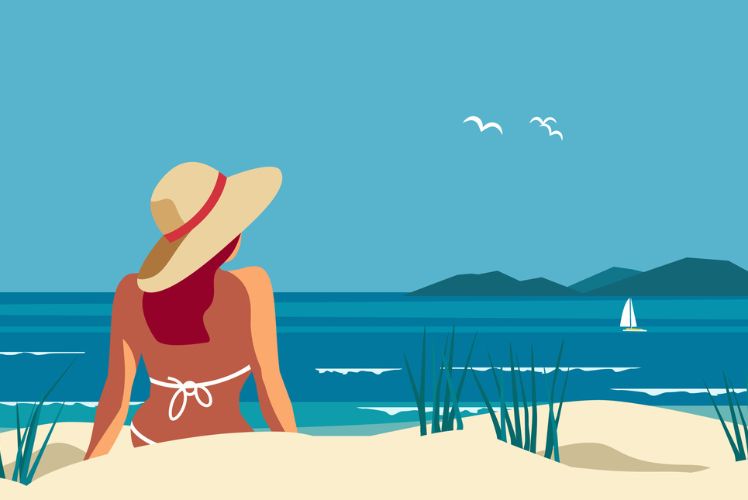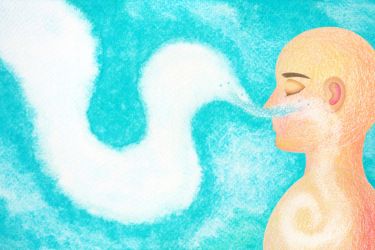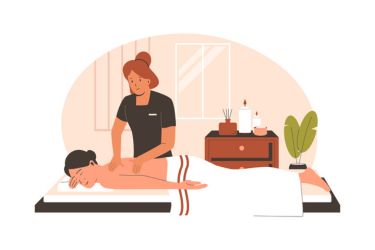People in some parts of the world live longer and healthier lives than the rest of us. These regions are known as blue zones, and they include places like Okinawa in Japan and Sardinia in Italy. Blue zones show us that daily habits, community ties, diet, and movement play a big role in helping people reach old age with fewer illnesses.
By understanding what people in blue zones do differently, we can discover simple changes to boost our own health and longevity. Residents of these areas often share similar lifestyle patterns, such as regular physical activity and meals based on whole foods. They also tend to have close family and social connections, which may offer added protection against stress and disease.
Key Takeaways
- Blue zones are regions where many people live longer, healthier lives.
- Habits like healthy eating, staying active, and strong social ties are common in blue zones.
- We can learn valuable health lessons from blue zone lifestyles.
Overview of Blue Zones
Blue Zones are specific regions across the globe where people live much longer, often reaching age 100 and beyond. These areas stand out not just for their high life expectancy but also for low rates of chronic illness and vibrant communities with healthy habits.
Definition and History
A Blue Zone is a region recognised for its unusually high concentration of centenarians and healthy ageing. The term "Blue Zone" was first used by researchers who marked these rare longevity hotspots using blue ink on maps. National Geographic explorer Dan Buettner later popularised the concept through his research and writing.
The history of Blue Zones began with studies in Italy in the early 2000s. Teams investigating areas with exceptional longevity found these communities had shared lifestyle habits, diets, and strong social connections. Over time, Blue Zones became a key concept in the study of human longevity, encouraging us to learn from these real-life examples of healthy ageing.
Today, the term includes both the scientific findings and the cultural practices that set these places apart. Careful record-keeping is essential to verify claims about age and ensure the credibility of research.
Blue Zone Locations
We recognise five main Blue Zones across the world:
- Okinawa, Japan
- Sardinia, Italy
- Nicoya Peninsula, Costa Rica
- Ikaria, Greece
- Loma Linda, California, USA
Each place has unique traditions and ways of living that support health and long life. For example, Sardinia is known for its isolated mountain villages, while Okinawa is famous for its plant-based diet and supportive social circles.
You can find more details about these regions and what makes them special on Blue Zones and research pages like Healthline. Each location is studied for its environment, daily routines, and cultural values that help people live longer.
Demographics of Centenarians
Centenarians are people who reach the age of 100, while supercentenarians live to 110 or more. In Blue Zones, centenarians form a larger percentage of the population than elsewhere.
We observe that many centenarians are free from major illnesses, stay mentally sharp, and remain active within their communities. Common features include strong family ties, daily physical activity, and diets centred around plants and whole foods.
Record-keeping in these areas is often detailed, helping to confirm ages and track health trends. The study of centenarians helps us learn practical ways to extend our own healthy years by looking at their routines and social habits.
Key Lifestyle Factors Contributing to Longevity
The daily lives of people living in Blue Zones show us the impact of healthy routines. Their habits around food, movement, social ties, belief, and purpose all play a key role in their long and healthy lives.
Diet and Nutrition
Blue Zones are famous for their way of eating. The diet is mostly plant-based, with lots of vegetables, beans, lentils, and whole grains. People in these regions eat meat only a few times a month or use it more as a side rather than the main focus of a meal.
Processed foods and added sugars are rare. Instead, meals focus on fresh and simple ingredients. Many follow the "80% rule", where we eat until we are about 80% full, rather than until we feel stuffed.
Regular intake of nuts, small amounts of dairy like goat’s milk or yoghurt, and moderate wine with meals are also common. Eating mindfully and enjoying meals with family may support better digestion and satisfaction with less food. More about these healthy eating habits can be found in the Power 9 of Blue Zones.
| Typical Blue Zones Foods | Frequency |
|---|---|
| Vegetables | Daily |
| Beans & Lentils | Daily |
| Whole Grains | Daily |
| Meat | Rarely (Weekly) |
| Dairy (mainly goat’s/yoghurt) | Occasionally |
Physical Activity and Play
People in Blue Zones do not usually go to the gym or follow structured workouts. Instead, they move naturally as part of their daily routine. Walking, gardening, and doing housework keep them active and strong.
This regular physical activity, viewed more as play or social time than exercise, helps us stay mobile as we age. Taking the stairs, carrying shopping, or cycling everywhere are simple habits that add up. We benefit from gentle movement spread throughout the day rather than a single, intense session.
Playing with grandchildren, dancing, and community games are also part of their culture. These enjoyable activities make movement feel less like a chore and more like an opportunity to connect with others. Read more about the role of daily movement in healthy longevity.
Tips for more activity:
- Take short walking breaks
- Do light chores by hand
- Play games with friends or family
Community and Social Connections
Strong relationships are a pillar of long life in Blue Zones. People there often live close to extended family and have a tight-knit group of friends. This sense of community offers emotional support and reduces feelings of loneliness.
Sharing meals, celebrating together, and helping neighbours create a web of care. Social networks, known as “moais” in Okinawa, Japan, help us handle stress better and promote positive behaviours like healthy eating and regular movement.
The support of our community makes challenges easier and encourages us to stick to good habits. Spending time together can also improve mental health and give us a clear sense of belonging. These ideas are explored further in the Power 9 list.
Benefits of community:
- Shared responsibilities
- Stronger mental health
- Encouragement for healthy habits
Sense of Purpose and Faith
People in Blue Zones often have a strong sense of purpose, which they refer to as “ikigai” in Okinawa or “plan de vida” in Nicoya. Knowing why we get up each morning can help us feel happier and may lower stress.
Faith and religion also play a key role for many. Most residents of Blue Zones belong to a faith-based community and attend regular gatherings. Religion offers comfort, routine, and a way to cope with life’s problems.
Having a reason to help others, whether through work, volunteering, or caring for family, gives us direction. Moments of prayer, meditation, or reflection are daily habits that help us slow down and stay grounded. How purpose and belief shape our lives is detailed in Blue Zone research.
Distinctive Features of Major Blue Zones
Certain communities around the world have much higher numbers of people living beyond 100 years. These places share unique habits, diets, and social traditions that help support longer and healthier lives.
Sardinia, Italy
Sardinia, an island off the coast of Italy, is home to one of the highest concentrations of male centenarians in the world. Much of the population lives in rugged mountain villages, where walking is a daily part of life. We find that their diet is heavily based on whole grains, beans, vegetables, and goat’s milk.
Bread made from whole wheat, like carta di musica, is a staple. Cheese and wine are enjoyed in moderation. Most meat is eaten only on special occasions. Family is central, and elders are respected and cared for. Social bonds run deep, offering frequent contact with friends and relatives. Simple, physical work and a strong sense of community connection are two of the most important features here.
Okinawa, Japan
Okinawa, Japan, is known for having some of the world’s healthiest women and a remarkable number of centenarians. People here favour a plant-based diet rich in sweet potatoes, tofu, vegetables, and bitter melon. Fish and meat are eaten sparingly. One key rule they follow is “hara hachi bu”, which means eating until you are only 80% full.
We see strong social networks called “moai”, where members offer support to each other throughout life. Daily movement is common. Many tend gardens well into old age, staying active both physically and mentally. Spirituality, purpose, and positive attitudes towards ageing are woven into daily routines. This blend of healthy habits has been shown to reduce rates of chronic disease.
Loma Linda, California
Loma Linda, located in Southern California, stands out as the only Blue Zone in North America. Most residents are members of the Seventh-day Adventist Church. Their faith shapes health practices, encouraging a largely vegetarian diet high in beans, nuts, oats, and fresh fruits.
Alcohol, smoking, and processed foods are mostly avoided. Community support is strong through worship and volunteering, and regular time is set aside for rest and reflection. Exercise is often simple, such as walking or gardening. This lifestyle is linked with significantly longer lifespans than average for the United States.
Health, Ageing, and Longevity Data
Certain global regions show longer life expectancies with fewer chronic illnesses. These outcomes are shaped by factors such as local healthcare, economic stability, and support for older adults.
Life Expectancy Trends
People in the so-called blue zones such as Okinawa, Japan, and Sardinia, Italy, regularly reach age 90 or beyond. In these regions, life expectancy is higher than the global average, and there are many more centenarians per capita compared to other places.
Life Expectancy Comparison Table
| Location | Average Life Expectancy | Centenarians per 100,000 |
|---|---|---|
| Okinawa | 84 years | 50+ |
| Sardinia | 82 years | 30+ |
| United Kingdom | 81 years | 5 |
People in these regions often experience better daily functionality at advanced ages. Diet, daily activity, and social ties are linked to these positive outcomes, creating communities where people age well and live longer. For further information, see more about Blue Zones and longevity.
Ageing and Disease Incidence
Rates of age-related diseases differ by region and lifestyle choices. In blue zones, the incidence of conditions such as heart disease, stroke, and certain cancers is lower than in many Western countries.
Chronic disease rates rise with age, but strong health habits can keep these rates relatively low even into one's 80s and 90s. Regular movement, plant-based diets, and social engagement are common.
Mental health in older adults also matters. Some areas with good physical health also have lower suicide rates among the elderly, likely due to strong family and community support. Learn more about these healthy ageing patterns in blue zones.
Poverty and Pensions
Financial stability is a key factor in healthy ageing. In blue zones, poverty rates among older adults tend to be lower than in other regions, partly due to strong family support and community-based living.
Government and community pension systems in these areas help seniors avoid poverty. Support structures like these can reduce stress and keep people part of daily life longer.
Where pensions are unreliable or low, poverty rates rise and health often suffers. Access to basic needs and secure pensions is important for quality of life and longevity among older adults. For a broader look, see how community factors impact health and pensions in blue zones.
Controversies and Challenges in Blue Zone Research
Recent studies and expert reviews have raised serious doubts about the claims surrounding Blue Zones. Questions about data reliability, research methods, and local reporting have led to scrutiny of longevity statistics in these regions.
Fraud and Accuracy in Longevity Claims
Concerns about fraud and inaccurate reporting are especially high in Blue Zone areas. Some researchers have discovered errors in birth records, with ages being inflated or misreported. Poor record-keeping can result in residents being listed as much older than they actually are, which makes it challenging to confirm true cases of supercentenarians.
Dr Newman and other analysts have found that many claims for extraordinary age in Blue Zones may be based on flawed or fabricated data. In some cases, local incentives, such as pensions and benefits for elders, have encouraged families to exaggerate ages. Studies have criticised the lack of verified birth certificates and have highlighted the difficulty in verifying extreme longevity claims in places like Ikaria, Sardinia, and Okinawa. Some experts have gone so far as to call these stories “infallibly flawed” due to widespread data issues, as described by research from UCL and reported challenges with record-keeping.
Critiques of Methodologies
The scientific methods used in Blue Zone research are under growing criticism. Some studies have relied on selective reporting or anecdotal evidence rather than large-scale, independently verified data. For example, researchers have raised doubts about how centenarians are counted, and whether families and local officials consistently apply the same criteria.
Certain studies have also failed to use rigorous age-verification procedures. This can result in individuals being recorded as centenarians based solely on family testimony or incomplete documents. The use of outdated or inconsistent statistical approaches may exaggerate the number of people reaching extreme ages. Researchers warn that studies without independent verification can produce misleading conclusions, as noted in recent news.
Sociocultural Factors Influencing Data
Cultural norms and local traditions play a significant role in data reporting. In some Blue Zone communities, respect for elders and family honour can influence families to misreport or inflate ages. Local economic pressures, such as receiving pensions, can also motivate families to keep elders on the records long after they have passed away.
Different regions have varied systems for tracking age, and this can affect accuracy. In communities where written records are scarce, oral histories may replace official documentation, which increases the risk of errors. These sociocultural factors combine with weak government record-keeping to blur the line between genuine supercentenarians and mistaken identities, as discussed in recent expert analysis.
Practical Lessons and Health Advice
Many people are interested in how to live healthier and longer lives. By studying the secrets of the blue zones, we can put proven habits and strategies into our daily routines, build on what research is showing, and think about what might help us live to 100 in the future.
Implementing Blue Zone Practices
In blue zones, people follow simple routines that support a long and healthy life. We can adapt some of these habits, such as eating mostly plant-based diets, using beans, whole grains, and lots of vegetables. Limiting meat and processed foods can also help lower the risk of chronic illness.
Regular movement is key. Instead of intense exercise, people in blue zones often walk, garden, and move naturally throughout the day. Staying active this way supports their health into old age.
Building social connections is also important. Strong friendships and close family relationships help increase happiness and reduce stress. Taking time for daily relaxation, such as short naps or quiet reflection, helps keep both mind and body balanced. These practices can be found in more detail on the Blue Zones website at Blue Zones: Home - Live Better, Longer.
Current Research on Longevity
Researchers have studied the diets, activities, and social lives of people in blue zones. They have found that healthy habits may lower the risk of heart disease, diabetes, and certain cancers. Most evidence suggests that a plant-focused diet, moderate physical activity, and strong support networks can increase our chances of living longer.
A 2023 study confirmed that following these habits often results in not only longer but better quality lives with fewer health problems. Science continues to explore how sleep, stress control, and daily routines affect ageing. We now know that while these habits don't guarantee we won't get sick, they do offer the best chances for good health. Details on current findings can be read at How to Live Longer: Lessons From Blue Zones.
Future Directions
As our knowledge grows, more experts are looking for new ways to bring blue zone strategies into modern life. There is growing interest in designing communities that encourage walking and social interaction, making it easier for all ages to stay active and connected.
Future research is expected to focus on how genes and lifestyle mix together to slow ageing even more. We may also see more public programmes based on blue zone habits in schools, cities, and workplaces. Learning what really helps us live past 100 means applying these lessons to our own lives as well as our communities. For more about community health approaches, we can learn from The healthy living lessons you could learn from blue zones.
Frequently Asked Questions
We examine the specific geographical locations, food choices, and shared behaviours that may help people live longer. We also look at challenges to the claims about these so-called Blue Zones.
What are the designated geographical areas known for exceptional human longevity?
Blue Zones are regions where people often live well into old age. These include Okinawa in Japan, Sardinia in Italy, Nicoya in Costa Rica, Icaria in Greece, and Loma Linda in California.
These places are known for high numbers of residents living past 90 or even 100 years.
What dietary habits contribute to the enhanced lifespan in these specific regions?
People living in these regions tend to eat mostly plant-based diets. Meals include lots of vegetables, beans, whole grains, and fruits.
Meat is eaten rarely and in small amounts. They also use olive oil and nuts, and people drink water, tea, or moderate amounts of wine as part of daily routines. More information about these diet patterns can be found through various resources about the Power 9® traits.
How many distinct regions have been identified where people tend to live longer?
Researchers have identified five main Blue Zones. These are spread across different continents and cultures.
Each zone has unique cultural traditions, but all are recognised for their high rates of healthy, long-lived people.
Can the principles of high longevity in these regions be applied universally?
Some aspects, such as eating mostly plants and staying active, can be adopted in other places. Strong social ties and having a clear sense of purpose may also help extend life.
However, certain benefits seen in Blue Zones might be linked to genetics or environmental factors that are harder to copy. There are limits to how much these habits can be transported to other settings.
What lifestyle traits do inhabitants of these areas commonly share?
People in Blue Zones usually remain physically active every day without intense exercise. Activities like walking, gardening, and housework are common.
They also have close families, maintain friendships, and participate in community traditions. Lower stress and healthy sleep patterns are often part of daily life, and many have spiritual or religious routines. For a simple summary of their habits, see more on shared lifestyle traits.
What evidence challenges the authenticity of these areas' impact on health and longevity?
Some researchers question whether the ages reported in Blue Zones are always accurate. Records in some locations may not be reliable, or population movements may affect data.
Furthermore, not all experts agree that lifestyle alone explains long lifespans in these areas. There are discussions on how much genetics, environment, and chance play roles in the results seen in Blue Zone longevity.





















